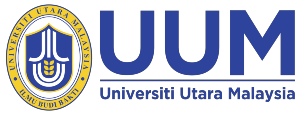FISH FEED DERIVED FROM AZOLLA
 PADANG TERAP: The high demand for freshwater fish such as tilapia, catfish and freshwater shrimp contributes to the country's aquaculture production.
PADANG TERAP: The high demand for freshwater fish such as tilapia, catfish and freshwater shrimp contributes to the country's aquaculture production.
Assoc. Prof. Dr Risyawati Mohamed Ismail, Director of the Food Security, Innovation and Development Research Centre (FInDER), School of Technology Management and Logistics (STML), Universiti Utara Malaysia (UUM), stated that farming of fish and other aquatic life is an important sector for the growth of the Malaysian economy that provides job opportunities for the people while also contributing towards strengthening the country's food security.
According to her, favourable climate, abundance of water supply and expansive beaches, make Malaysia a great location for aquaculture activities.
The year 2019 saw a total production of 485,817 metric tonnes of tilapia, while 203,074 metric tonnes of catfish and 156,200 metric tonnes of freshwater prawns were harvested.
"As a direct result of the brisk expansion of this market, there is a rising demand for animal feed to meet the requirements of this market. Unfortunately, the lack of fish feed in Malaysia, as well as the high cost of fish feed, has become a significant obstacle for the aquaculture industry in Malaysia.
"This problem is caused by the increasing demand for fish feed around the world, coupled with the limited availability of raw materials and fluctuations in the prices of these materials," she said.
So far, local manufacturers have only been able to satisfy about 30 percent of this demand; the remaining 70 percent is met by imports. Since its reliance on imports, the industry is now susceptible to fluctuations in prices around the world as well as disruptions in supply chains.
The recent years have seen a rise in the cost of fish feed, which has become another significant obstacle for the aquaculture industry. In 2021, fish feed in Malaysia cost between RM2.70 and RM4.00 per kilogram, with the price varying according to the variety of food and the quality of the food. The aquaculture industry has suffered as a direct result of the scarcity of fish feed as well as its high price.
In order to cover operating cost, fish farmers are forced to use cheaper and less nutritious alternatives as fish feed. This results in lower growth rates, reduced survival rates, and poor-quality products. Additionally, this prevents small-scale fish farmers from becoming competitive with larger commercial farms.
In light of this phenomenon, she became a pioneer in the production of fish feed made from a local source known as Azolla in order to assist fish farmers.
Azolla is a species of green plant that develops in a symbiotic relationship with the cyanobacterium (blue-green algae) known as Anabaena. This particular species of cyanobacterium can be found growing in abundance in water ponds as well as rice fields in Asian countries.
"There are a great number of distinct species of Azolla, and every one of those species has a significant amount of unrealized potential for application in the food and cosmetics industries. In countries such India, Indonesia and the Philippines, Azolla is used in the production of animal feed.
"In Malaysia, similar efforts have been made but the use of Azolla has not reached an optimal and significant level to meet the needs of the local livestock industry," she explained.
Assoc. Prof. Dr Risyawati Mohamed Ismail had previously produced chicken feed from Azolla, and the product is currently undergoing final field tests prior to being commercialised.
"In order to solve the similar issue of insufficient food supplies in the aquaculture industry, I produce fish feed pellets using Azolla in addition to chicken feed pellets. Up to this point, the prototype has been successful in laboratory tests, and it is currently being prepared for larger field tests.
"This project also makes use of a platform for cooperative work between UUM and the community of villagers living in the Padang Terap district of Kedah. The involved villagers are seasoned catfish farmers, and they play an important role as key stakeholders in the regional fish supply chain.
"The close collaboration with catfish farmers makes this project more meaningful, and researchers get a real picture and detailed information related to fish farming operations done through aquaculture," she added.
She emphasised the critical importance for Malaysia to develop the ability to produce local raw materials to ensure the cost of livestock feed that can guarantee the long-term viability of the livestock sector.
"I believe that if research is done in detail and on a comprehensive level on various types of local resources, we will be able to produce more economically viable livestock feed and reduce our reliance on raw materials imported from abroad," she said.
The research was also assisted by two other researchers from STML namely Dr Mastora Mustafar and Dr Siti Zakiah Abu Bakar. Both of these STML researchers are focused on the economic aspects of catfish farming in the inland areas of Kedah.
This research project on alternative foods was initiated at UUM two years ago with the intention of assisting B40 farmers and rural communities in continuing their economic projects despite the rising cost of animal feed.
